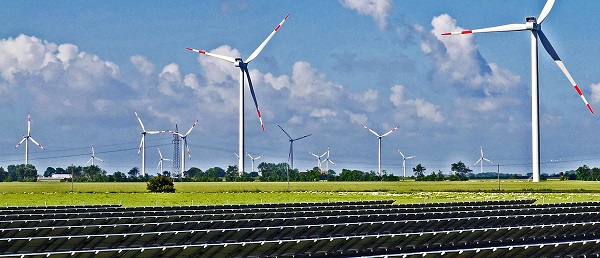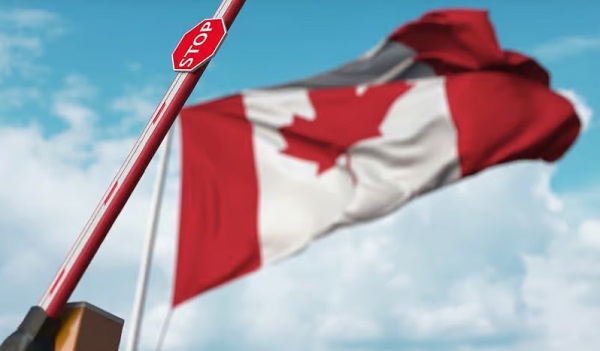Alberta
Alberta NDP have their own Just Transition plan – Project Confederation
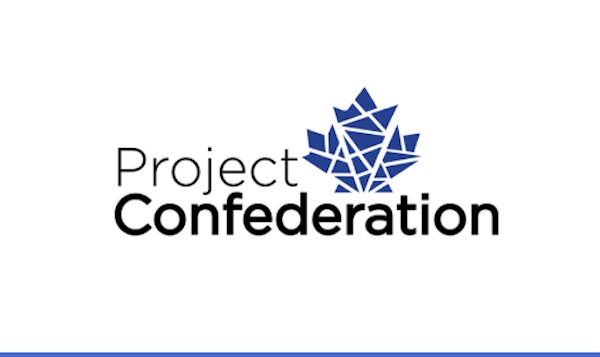
From Josh Andrus, Executive Director of Project Confederation
Look what we discovered about the “Just Transition”…
You might remember, not so long ago, that federal Natural Resources Minister, Jonathan Wilkinson, announced that the federal Liberal government would soon be rolling out its plan for a “Just Transition.”
This is the “Just Transition” plan that the federal NDP insisted be included in the “confidence and supply agreement” that is currently propping up Justin Trudeau’s minority government.
Then, an internal government memo was made public, suggesting that hundreds of thousands of jobs will be lost in this “transition” – particularly in western Canada.
Project Confederation immediately sprung to action, investigating the proposed policies and launching a petition against the plan, which has now received more than 13,000 signatures.
(If you haven’t signed the petition yet, you can do so here)
As news spread, Alberta Premier Danielle Smith, and Saskatchewan Premier Scott Moe spoke out strongly against the plan.
But one politician was suspiciously quiet – the Alberta NDP leader, Rachel Notley.
We thought Albertans, and Canadians, deserved to know whether someone running to be Premier of Alberta supported the shutting down of Alberta and western Canada’s largest industry.
And so we pushed hard for Rachel Notley to answer the question – does she support the “Just Transition” idea?
But, as time went on, Notley’s silence became more and more deafening.
Eventually, her silence became so deafening that even some in the media began to question whether or not she truly disagreed with the plan.
Hours turned into days, and days turned into weeks – literally!
Two full weeks after Wilkinson’s announcement, Rachel Notley finally broke her silence, calling on Ottawa to “put the brakes on” the “Just Transition”.
But, “put the brakes on” sounded a lot more like “wait until after the Alberta election” than “ditch it entirely” to us.
So we decided to do some more digging.
Well, after some excellent work by our research team, we think we now know why it took so long for Rachel Notley to oppose the “Just Transition.”
It turns out that, rather than just being some federal NDP idea that she’s now distanced her provincial party from, the “Just Transition” was actually a huge part of her NDP government’s plans.
Insert flashback music here.
It’s November 2015, the newly minted NDP government are celebrating a big election win, and are moving forward with their climate change strategy.
(You know, the one they accidentally forgot to mention that they were going to implement if they won).
New Alberta Minister of Environment and Parks, Shannon Phillips, commissions a blue-ribbon report by a team of high-profile academics, to help the NDP figure out exactly how to fulfil their campaign promise (sorry, their campaign omission).
Several months later, the “Climate Leadership Report” is released, setting out the government’s vision for climate policy and – guess what?
The “Just Transition” is a key part of the NDP’s Climate Leadership Report!
Yep, that’s right – forget not knowing what the “Just Transition” is, and claiming not to support the federal government’s plan.
In reality, it was Rachel Notley’s government who wrote the policy in the first place, and then made it a critical part of their entire environmental policy agenda.
Here are some extracts from the report…
In a section discussing mitigating the impacts of carbon pricing on low- and middle-income Albertans, the NDP said they would “support a sound and just transition for labour and communities…”

Later in the report, the authors highlight a quote from their friends at the Alberta Federation of Labour.
This quote is really just one gigantic contradiction, given the government is literally legislating their employment out of existence:

Next, the report talks about what the workers who lose their jobs might need to do as part of this “transition” – it notes that they may need assistance with “relocation”:

Oh, sorry, did the government legislate away your job?
Not to worry, we’ll “fix” it for you by helping you walk away from your entire life and move somewhere else.
Remember how Rachel Notley said Albertans might have to move to BC to find work while she was Premier?
Yeah, we’d prefer Albertans could find work here in Alberta, thanks.
*****
Here’s the thing…
Not only did the Alberta NDP support the concept of a federal “Just Transition” when they were in government, they were also actively implementing their own “Just Transition” – 8 years earlier than the federal government!
And yet now they claim to not support the idea at all?
No wonder it took so long for Rachel Notley to answer the question.
She was probably just surprised that no one in the media had dug up her own support of “Just Transition” legislation from years before, and was wondering if she could get away with pretending she hadn’t.
Well, we’re not surprised no one in the media bothered looking.
But, we did look, and thank goodness we did!
Thank you to our researchers who dug up this document, which I’m sure the NDP would have preferred we’d not found.
If you’d like to help us do even more research like this, please click here to make a donation to our work.
Otherwise, if you haven’t signed the No Unjust Transition petition yet, please click here to do so now.
Rachel Notley’s claim to now be opposed to the exact thing that she herself implemented is not credible.
She can run from it, but she can’t hide.
Her environmental policies put Alberta into one of its deepest recessions ever.
And we can’t afford to repeat those mistakes.
Sincerely,
Josh Andrus
Executive Director
Project Confederation
Alberta
Alberta’s new diagnostic policy appears to meet standard for Canada Health Act compliance

From the Fraser Institute
By Nadeem Esmail, Mackenzie Moir and Lauren Asaad
In October, Alberta’s provincial government announced forthcoming legislative changes that will allow patients to pay out-of-pocket for any diagnostic test they want, and without a physician referral. The policy, according to the Smith government, is designed to help improve the availability of preventative care and increase testing capacity by attracting additional private sector investment in diagnostic technology and facilities.
Unsurprisingly, the policy has attracted Ottawa’s attention, with discussions now taking place around the details of the proposed changes and whether this proposal is deemed to be in line with the Canada Health Act (CHA) and the federal government’s interpretations. A determination that it is not, will have both political consequences by being labeled “non-compliant” and financial consequences for the province through reductions to its Canada Health Transfer (CHT) in coming years.
This raises an interesting question: While the ultimate decision rests with Ottawa, does the Smith government’s new policy comply with the literal text of the CHA and the revised rules released in written federal interpretations?
According to the CHA, when a patient pays out of pocket for a medically necessary and insured physician or hospital (including diagnostic procedures) service, the federal health minister shall reduce the CHT on a dollar-for-dollar basis matching the amount charged to patients. In 2018, Ottawa introduced the Diagnostic Services Policy (DSP), which clarified that the insured status of a diagnostic service does not change when it’s offered inside a private clinic as opposed to a hospital. As a result, any levying of patient charges for medically necessary diagnostic tests are considered a violation of the CHA.
Ottawa has been no slouch in wielding this new policy, deducting some $76.5 million from transfers to seven provinces in 2023 and another $72.4 million in 2024. Deductions for Alberta, based on Health Canada’s estimates of patient charges, totaled some $34 million over those two years.
Alberta has been paid back some of those dollars under the new Reimbursement Program introduced in 2018, which created a pathway for provinces to be paid back some or all of the transfers previously withheld on a dollar-for-dollar basis by Ottawa for CHA infractions. The Reimbursement Program requires provinces to resolve the circumstances which led to patient charges for medically necessary services, including filing a Reimbursement Action Plan for doing so developed in concert with Health Canada. In total, Alberta was reimbursed $20.5 million after Health Canada determined the provincial government had “successfully” implemented elements of its approved plan.
Perhaps in response to the risk of further deductions, or taking a lesson from the Reimbursement Action Plan accepted by Health Canada, the province has gone out of its way to make clear that these new privately funded scans will be self-referred, that any patient paying for tests privately will be reimbursed if that test reveals a serious or life-threatening condition, and that physician referred tests will continue to be provided within the public system and be given priority in both public and private facilities.
Indeed, the provincial government has stated they do not expect to lose additional federal health care transfers under this new policy, based on their success in arguing back previous deductions.
This is where language matters: Health Canada in their latest CHA annual report specifically states the “medical necessity” of any diagnostic test is “determined when a patient receives a referral or requisition from a medical practitioner.” According to the logic of Ottawa’s own stated policy, an unreferred test should, in theory, be no longer considered one that is medically necessary or needs to be insured and thus could be paid for privately.
It would appear then that allowing private purchase of services not referred by physicians does pass the written standard for CHA compliance, including compliance with the latest federal interpretation for diagnostic services.
But of course, there is no actual certainty here. The federal government of the day maintains sole and final authority for interpretation of the CHA and is free to revise and adjust interpretations at any time it sees fit in response to provincial health policy innovations. So while the letter of the CHA appears to have been met, there is still a very real possibility that Alberta will be found to have violated the Act and its interpretations regardless.
In the end, no one really knows with any certainty if a policy change will be deemed by Ottawa to run afoul of the CHA. On the one hand, the provincial government seems to have set the rules around private purchase deliberately and narrowly to avoid a clear violation of federal requirements as they are currently written. On the other hand, Health Canada’s attention has been aroused and they are now “engaging” with officials from Alberta to “better understand” the new policy, leaving open the possibility that the rules of the game may change once again. And even then, a decision that the policy is permissible today is not permanent and can be reversed by the federal government tomorrow if its interpretive whims shift again.
The sad reality of the provincial-federal health-care relationship in Canada is that it has no fixed rules. Indeed, it may be pointless to ask whether a policy will be CHA compliant before Ottawa decides whether or not it is. But it can be said, at least for now, that the Smith government’s new privately paid diagnostic testing policy appears to have met the currently written standard for CHA compliance.

Lauren Asaad
Policy Analyst, Fraser Institute
Alberta
Housing in Calgary and Edmonton remains expensive but more affordable than other cities
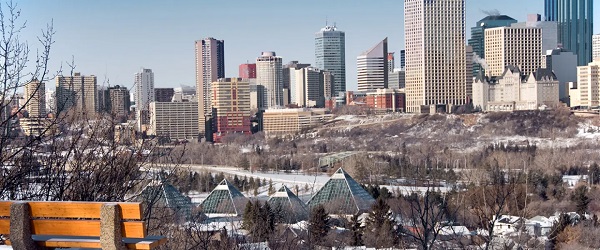
From the Fraser Institute
By Tegan Hill and Austin Thompson
In cities across the country, modest homes have become unaffordable for typical families. Calgary and Edmonton have not been immune to this trend, but they’ve weathered it better than most—largely by making it easier to build homes.
Specifically, faster permit approvals, lower municipal fees and fewer restrictions on homebuilders have helped both cities maintain an affordability edge in an era of runaway prices. To preserve that edge, they must stick with—and strengthen—their pro-growth approach.
First, the bad news. Buying a home remains a formidable challenge for many families in Calgary and Edmonton.
For example, in 2023 (the latest year of available data), a typical family earning the local median after-tax income—$73,420 in Calgary and $70,650 in Edmonton—had to save the equivalent of 17.5 months of income in Calgary ($107,300) or 12.5 months in Edmonton ($73,820) for a 20 per cent down payment on a typical home (single-detached house, semi-detached unit or condominium).
Even after managing such a substantial down payment, the financial strain would continue. Mortgage payments on the remaining 80 per cent of the home’s price would have required a large—and financially risky—share of the family’s after-tax income: 45.1 per cent in Calgary (about $2,757 per month) and 32.2 per cent in Edmonton (about $1,897 per month).
Clearly, unless the typical family already owns property or receives help from family, buying a typical home is extremely challenging. And yet, housing in Calgary and Edmonton remains far more affordable than in most other Canadian cities.
In 2023, out of 36 major Canadian cities, Edmonton and Calgary ranked 8th and 14th, respectively, for housing affordability (relative to the median after-tax family income). That’s a marked improvement from a decade earlier in 2014 when Edmonton ranked 20th and Calgary ranked 30th. And from 2014 to 2023, Edmonton was one of only four Canadian cities where median after-tax family income grew faster than the price of a typical home (in Calgary, home prices rose faster than incomes but by much less than in most Canadian cities). As a result, in 2023 typical homes in Edmonton cost about half as much (again, relative to the local median after-tax family income) as in mid-sized cities such as Windsor and Kelowna—and roughly one-third as much as in Toronto and Vancouver.
To be clear, much of Calgary and Edmonton’s improved rank in affordability is due to other cities becoming less and less affordable. Indeed, mortgage payments (as a share of local after-tax median income) also increased since 2014 in both Calgary and Edmonton.
But the relative success of Alberta’s two largest cities shows what’s possible when you prioritize homebuilding. Their approach—lower municipal fees, faster permit approvals and fewer building restrictions—has made it easier to build homes and helped contain costs for homebuyers. In fact, homebuilding has been accelerating in Calgary and Edmonton, in contrast to a sharp contraction in Vancouver and Toronto. That’s a boon to Albertans who’ve been spared the worst excesses of the national housing crisis. It’s also a demographic and economic boost for the province as residents from across Canada move to Alberta to take advantage of the housing market—in stark contrast to the experience of British Columbia and Ontario, which are hemorrhaging residents.
Alberta’s big cities have shown that when governments let homebuilders build, families benefit. To keep that advantage, policymakers in Calgary and Edmonton must stay the course.
-

 Crime2 days ago
Crime2 days agoBrown University shooter dead of apparent self-inflicted gunshot wound
-
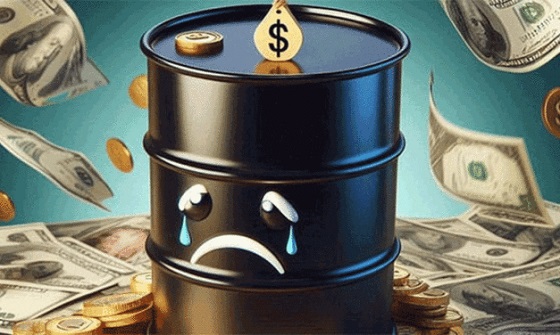
 Business23 hours ago
Business23 hours agoGeopolitics no longer drives oil prices the way it used to
-

 Business22 hours ago
Business22 hours agoArgentina’s Milei delivers results free-market critics said wouldn’t work
-

 Alberta2 days ago
Alberta2 days agoAlberta’s new diagnostic policy appears to meet standard for Canada Health Act compliance
-
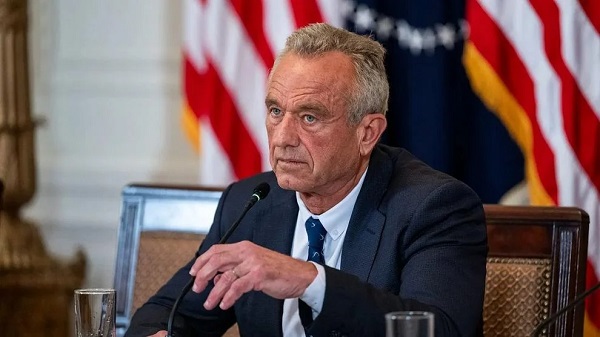
 Health1 day ago
Health1 day agoRFK Jr reversing Biden-era policies on gender transition care for minors
-

 Business2 days ago
Business2 days agoTrump signs order reclassifying marijuana as Schedule III drug
-

 Censorship Industrial Complex1 day ago
Censorship Industrial Complex1 day agoCanadian university censors free speech advocate who spoke out against Indigenous ‘mass grave’ hoax
-

 Business22 hours ago
Business22 hours agoDeadlocked Jury Zeroes In on Alleged US$40 Million PPE Fraud in Linda Sun PRC Influence Case








